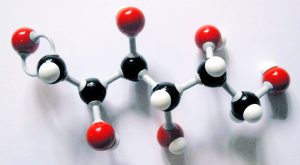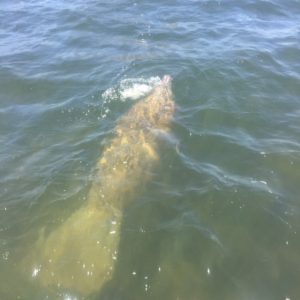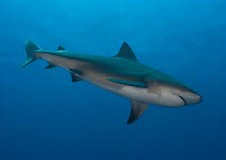Adenosine triphosphate (ATP)…
This is the “fuel” molecule for life. Both plants and animals need it to sustain their existence. However, ATP cannot be acquired from the environment. It must be synthesized within the cells. To synthesize it, you need two things (1) glucose (a simple single sugar molecule – a monosaccharide), and (2) oxygen (which both plants and animals obtain from the atmosphere.

Herein is where the difference between plants and animals exist. Plants produce their own glucose (producers) and animals must consume it (consumers) by consuming another plant or animal who have stored glucose – in a sense, stealing it from the other creature.
As we have learned, plants produce glucose in a process called photosynthesis. They obtain water and carbon dioxide from the environment, break these compounds up using energy from the sun, and re-arrange them into glucose – with a little oxygen left over which they release into the atmosphere. These simple monosaccharide sugars can be combined to form double sugars we call disaccharides and those can be combined further to make large sugar molecules we call polysaccharides. Plants store excess sugar they produce in large polysaccharides we call starch. Starch is one of the components of a healthy diet. Some people are on either an “all starch diet” or a “no starch diet”. But starches are excellent sources of sugars for animal consumers.
When animals consume these plants and starches, they utilize much of it to produce their needed ATP, but they also may have excess that can be stored for future use. Animals store their excess polysaccharides as fat, and it is this fat layer that gets many animals through the colder months when plants are not available to eat. We know that eating a “fatty” diet will produce more fat in our bodies and become “fatter” without exercise. Again, diet is important. There are times when fat is needed, and times when it is not.
With consuming animals, the idea is to expend less energy catching the potential prey than you gain by consuming it. For example, it does not make any sense to expend 8 units of energy to capture and kill a species that is only going to provide you with 5 units. Continuing to expend this amount of energy is not going to be good in the long run. So, predatory animals seek the “easiest” prey to kill – often selecting the young, old, or weak from another population.
But what could be easier to catch and kill than a plant.
Plants to do not run, bite, or scratch. They sit there and you eat them. So, why don’t more animals consume plants?

Photo: Marsha Stanton
The answer is that plants have their own defenses against animals. Their cell walls possess a large polysaccharide called cellulose. It is tough to chew and digest. Only animals who have teeth for cutting and masticating leaves, and the digestive system to digest it, can. We call them herbivores. But even herbivores cannot eat all plants. Many have silica in their leaves (kind of like glass), toxins, spines, wood, bark, all of which are difficult for many herbivores the chew and digest.
Animals who do not have the specialized teeth and digestive will consume other animals to obtain their needed glucose. We call these carnivores. The same rule applies here. Not all carnivores can eat all animals. Speed, shells, toxins, spines, teeth all deter predators from consuming them. Also, animals are mobile. So, carnivores must stalk or ambush their prey – because they are not sitting still – and some are easier to catch than others.

Photo: University of Florida IFAS
There are animals who can eat some plants and some animals. We call these omnivores. Then there are the detritivores (scavengers) – animals who consume their glucose by eating dead animals (carrion). You think this would be fall into the category of “very easy to catch and you do not have to kill” so, why are there not more detritivores? Understand that the carrion is more or less rancid meat full of worms and bacteria (also detritivores) and it takes a special digestive system to tolerate this. But there are many animals that do.

Photo: Molly O’Connor
We have spent a lot of time discussing the food differences between plants and animals but there are others. As we mentioned, most animals are mobile – but not all. They move around their environment seeking food a shelter. Some walk, run, leap, fly, burrow, climb, swim, and slither through the environment. Sexual reproduction is the rule, though there are many who can regenerate body parts. Most sexual reproduction is externally fertilized (outside of the body) but of course there are internal fertilizers also.
In the marine environment the consumption of food follows the basic rules mentioned above. There are planktivores, which are not found elsewhere. Locomotion is somewhat restricted to swimming, crawling, walking, burrowing – but some leap from the water. The reproduction rules are no different.

Image: Florida Museum of Natural History
As expected, animals are fascinating life forms and we will learn more about specific ones later in the course.
ACTIVITIES
- If you are doing school from home – explore your yard and log all of the different animals, you can find. Move slow as you walk around and look very closely. There will be many different types of insects. Birds should be common. Turn over rocks and logs (if you have them) and look beneath the pine straw. During winter many animals will be sleeping through the season under these. Be careful not to disturb them once you have seen them and careful place the rock or pine straw back.
- If you are at school, you too could do a search of campus. Most campuses are not conducive as wildlife habitat, but you may have a garden or grove of trees somewhere.
- If you can visit the beach, walk one of the trails, or the beach itself. It will be hard to find a great variety since it is cold, but there are some.
- Once you have your list, think about what they eat. How would you classify them – herbivores, carnivores, etc.? How do they move?
- Do you think the variety of animals would be different at night? Explore your yard right at sunset and see.
 0
0
